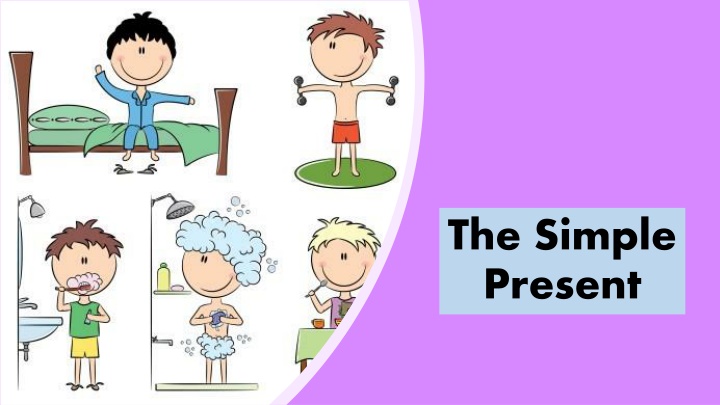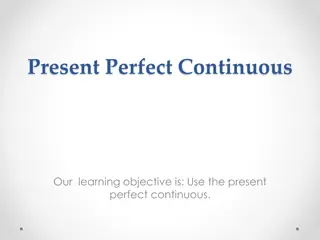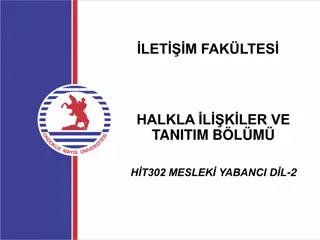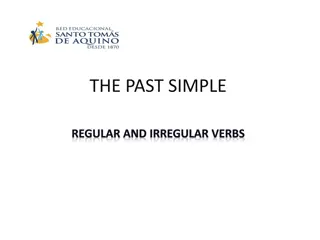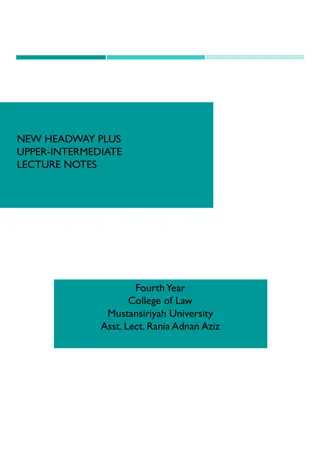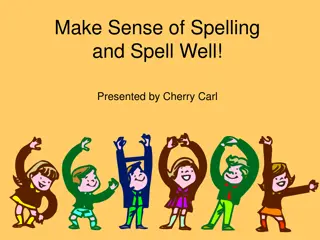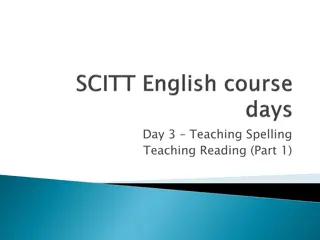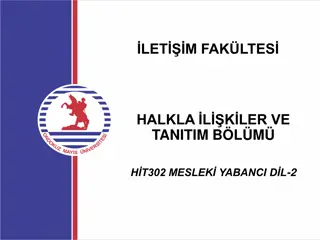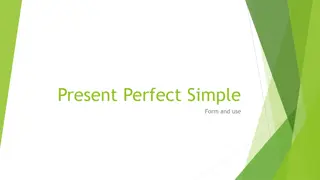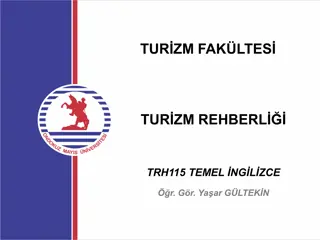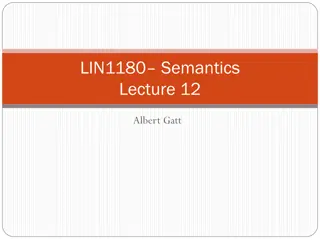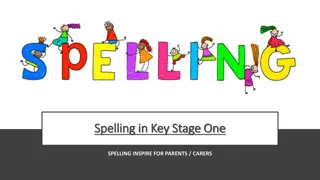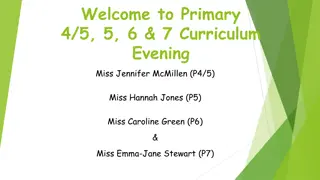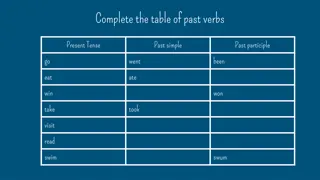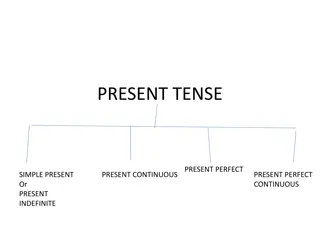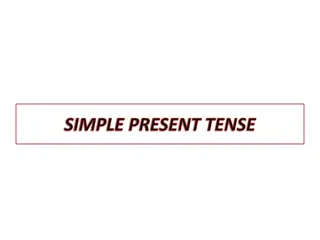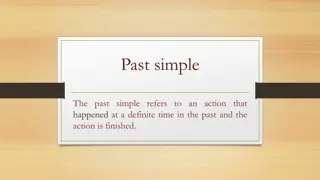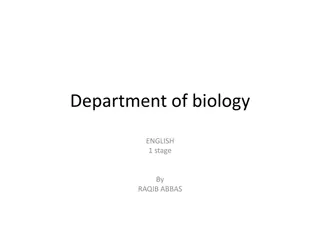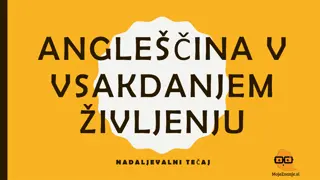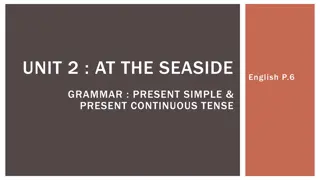Simple Present Tense: Usage, Formation, and Spelling Rules
Explore the Simple Present Tense through daily routines, affirmative statements, formation rules for different pronouns, spelling guidelines for adding final -s, and forming interrogative sentences. Understand how to express habits, truths, and routines in English using clear examples and explanations.
Download Presentation

Please find below an Image/Link to download the presentation.
The content on the website is provided AS IS for your information and personal use only. It may not be sold, licensed, or shared on other websites without obtaining consent from the author.If you encounter any issues during the download, it is possible that the publisher has removed the file from their server.
You are allowed to download the files provided on this website for personal or commercial use, subject to the condition that they are used lawfully. All files are the property of their respective owners.
The content on the website is provided AS IS for your information and personal use only. It may not be sold, licensed, or shared on other websites without obtaining consent from the author.
E N D
Presentation Transcript
The Simple Present
My Day I get up at 7:00 and get ready for school. I have breakfast and then I brush my teeth. At 7:30 I walk to school with my brother. School starts at 8:00 a.m. and finishes at 13.30 in the afternoon. My brother and I walk home, and we have lunch with our grandparents. In the afternoon I do my homework and then I play board games with my grandpa, or I read comic books. After that, I take a shower and then I have dinner. At 9.30, I brush my teeth and then I go to bed! Alex, 10, Athens
The Simple Present - Affirmative We use the Simple Present to talk about: daily habits. ( ) You brush your teeth every morning. states and general truths. ( ) I have two sisters. He lives in Athens.
How to form I - You - We - They To form the Simple Present Affirmative, you need a noun or pronoun and the verb . I walk You walk We walk They walk Remember A noun is an object or the name of a person, place etc. (ex. George, Ms Harrison, Paris) A (personal) pronoun is I, You, He, She, It, We, You , They
How to form He - She - It To form the Simple Present Affirmative, you need a noun or pronoun, the verb, and AND a final -s. He walks She walks It walks
The Simple Present - Affirmative I You walk He walks She walks It walks We walk You walk They walk walk
Spelling Rules for adding final -s When a verb ends in -sh, -ch, -x, -ss or -o we add es Ex. wash + s = washes go + s = goes When a verb ends in y and the letter before it is a consonant ( ), drop the y and add ies Ex. study + s = studies BUT if the letter before y is a vowel ( ), just add s Ex. stay + s = stays
Spelling Rules for adding final -s In any other case just add -s Ex. make + s = makes start + s = starts stop + s = stops
The Simple Present - Interrogative To form a question in the Simple Present we need the help of the verb do: Be careful ! Notice how in he-she-it the helping verb do has the final -s from the verb now. There is no -s in the verb anymore! For I - You - We They Do you play chess? He - She - It Remember the spelling rules, when a verb ends in o we add es. Does he make jokes? Does she live near you?
The Simple Present Short answers To give a short answer in the Simple Present: For I - You - We They Do you play chess? Yes, I do. - No,I don t. He - She - It Does he make jokes? Yes, he does. No, hedoesn t.
The Simple Present - Negative To form a negative in the Simple Present, againwe need the help of the verb do and the word not: Note! There is also a short version of the negative: I don t like, he doesn t like Tip! Write the two words as one and instead of the o use an apostrophe: I donot = I don t He doesnot = He doesn t For I - You - We They We donot like rain. He - She - It He does not wear glasses. She does not cook.
The Simple Present - I You cook He She It We You cook They cook cook Do I cook? Do you cook? Does he Does she cook? Does it Do we Do you Do they cook? I don t cook You don t cook He doesn t cook She doesn t cook It doesn t cook We don t You don t cook They don t cooks cooks cooks cook cook? cook? cook? cook? cook cook
